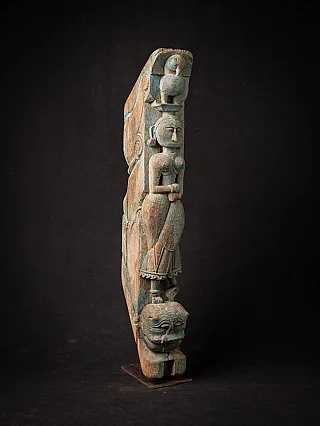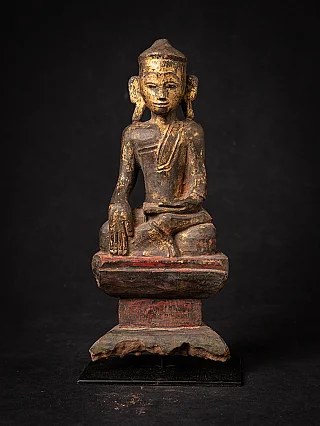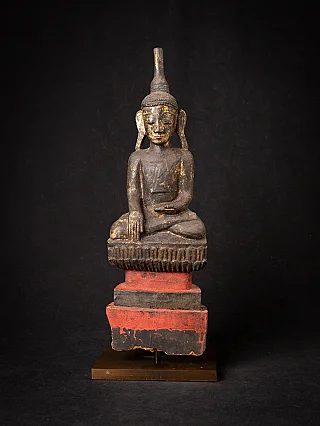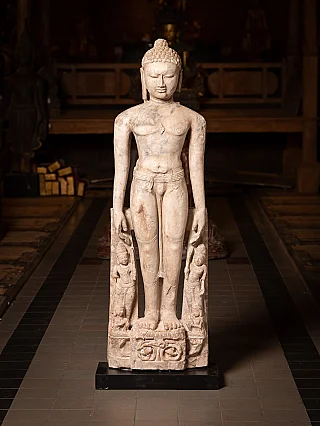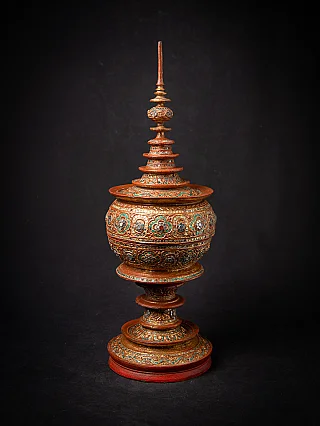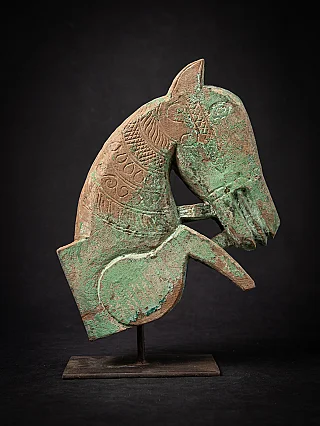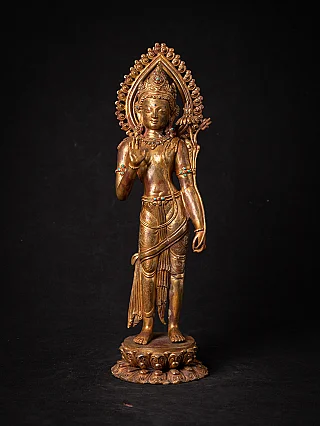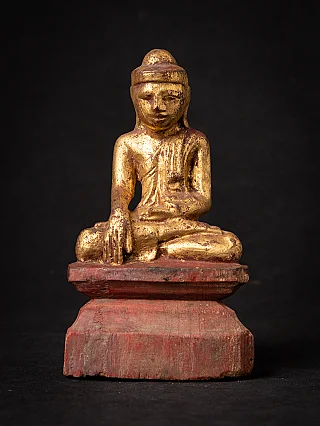Types of singing bowls

View our Buddha Statues in our gallery
When we talk about the singing bowls we generally imagine or thought of Jambati singing bowls. We tend to consider that there is only one type of singing bowls but in fact, there is more than one type of singing bowls that are or were manufactured. To characterize, they are Jambati, Thadobati, Naga/Pedestal, Remuna, Manipuri, Mani, Lingam, Ultabeti, etc. Some of these singing bowls are easily available in the market while others are very hard. They all tend to have a unique appearance and their sound producing capabilities are also very different. Let's see the details of the bowls in the following paragraphs.
Jambati Singing bowls

Jambati singing bowls are one of the beautiful, and heaviest singing bowl available in the market. In order to make the Jambati singing bowl, it requires 4 or 5 skilled craftsmen. It is believed that this type of antique singing bowls which are found today are made during the 17th or 18th century. These antique bowls are well preserved and have been using for different purposes like ceremonial, ritual or healing. Apart from mentioned usage, these bowls are also used for grain storage.
About the physical characteristics, the bowls have curved walls with a small flat bottom to place on the smooth surface. The lip of the singing bowls may be varied. Some bowls have lip facing inward which may be plain or grooved. Some bowl's lip has the sheared top of the wall which is not turned.
About the decoration, we will find these bowls with no or minimal decorations. These include several concentric circles radiating from the center of the basin. The hammering patches around the body of the singing bowls add the decoration to the bowls. The bowls that have smaller patches of hammering marks are believed to be of high quality and produces soothing sound than others.
Regarding the sound, it is obvious that these antique singing bowls play very wonderfully low and sonorous tones and this sound has the longest sustainability. When struck with the mallet, it generally plays in 2nd and 3rd octave. The sound may be higher if a wooden mallet is used.
Thadobati Singing Bowls

Thadobati Singing Bowls is one of the oldest designed bowls that are available in the market. It is believed that the oldest Thadobati singing bowls are dated back to at least 15th century. These singing bowls are the first choice for the person to buy because it is relatively inexpensive with very soothing sound. But there is variation in the quality of Thadobati so there are expensive ones which are very hard to find as well.
About the physical characteristics, the bowls have straight high-sided walls with a wide flat bottom. Some bowls have the diameter of the bottom just little less than the rim. The physique depends on the weight of the bowls. The small medium weight bowls have plain lips whose thickness equals to the wall itself. The walls are thinner than the heavyweight bowls. Heavier bowls have thicker walls and wider lips. These lips may be well decorated with a beads or sun symbols within the circle. These decorations may be slightly fade away and only beads or sun symbols may be vividly visible. There are extra thick and heavy Thadobati bowls as well which have slightly lumpy and uneven walls.
The decoration in these kinds of bowls is rarely seen. One of the design is mentioned above but are not clearly visible. There are other bowls which are highly decorated as well.
The Thadobati singing bowls have very wonderful sound producing abilities of 4 octaves.
Naga/Pedestal singing bowls
This type of singing bowls are very peculiar because these are made by forging two parts- the bowl and the pedestal below the bowl- permanently. The purpose of the pedestal is to support the bowl when placed in the smooth areas. These type of singing bowls are relatively rare and are little known about the origin and date of production.
About the physical characteristics, the bowls have a pedestal attached to round bottom of the bowl. The bowls may be decorated with four pairs of parallel lines just below the outer rim. There may be a small circle in the center of the bowl. For small and medium weight bowls the lips are plain. For the thicker and heavier bowls, the lips are grooved. It is recorded that the highest numbers of pedestal singing bowls are decorated with inscriptions or dots on the outside walls. These inscriptions begin and end with drawing of an animal, a fish or peacock.
Regarding the sound, the pedestal singing bowls are easy to play. These singing bowls are played around the rim rather than strike with the striker. These bowls produce a loud and bright sound when played around the rim with the mallet. The sound therapist and healers are very fond of these kinds of the bowl not only due to the soothing sound but also due to the pedestal which can be gripped while playing during the treatment.
Lingam Singing Bowl

Lingam singing bowls are characterized by a lingam placed at the center of the inner bowl. The origin of this antique singing bowl is believed to be at least 16th century. The purpose of this bowl is for ritual and ceremonial use. The bowls have smooth finishing walls and lip are extended inwards of the bowl. The decoration in this bowls is minimal with only a few concentric circles at the foot of the lingam and outer walls of the rims.
The sound produced by this bowl also has a soothing effect on the listener as it is sweet with a long sustained sound. Due to its unusual shape and unique design, these singing bowls are also hard to find bowls.
Mani Singing Bowl
These type of singing bowls are believed to be originated at around 16th to 18th century. Due to its unusual shape, the bowls are very rare and very difficult to find in the showrooms. These antique pieces have heavy flat bottoms but somewhat tapered at the lips. The lips are extended which faces inward of the bowl. We may find some concentric circles inside of the bowl whereas at the outer side we may notice few lines just below the lips. With some bowls, we may find a circle at the midpoint of the outer walls. Even though these markings are seen, they are fade out. Due to its shape, these bowls produce very loud and unique sound. It is believed that while playing with hardwood mallet, it responds well and produce soothing sound.
View our collections of statues and arts in our gallery
Manipuri Singing Bowl
Manipuri Singing Bowls stands out with their small rounded bottom. The physical characteristics may be varied with thin to thick and plain to highly decorative. The bowls have diameters of about 6 inches or less and are responsive and inexpensive if compared with other bowls. While playing the bowls, they should be balanced on the fingertips as they may rotate when they are placed in the hands.
If the bowls are decorated then we may find mala beads or sun motifs in between the lines just below the rim and we may observe concentric circles at the outer walls.
Remuna Singing Bowl
Even though Remuna singing bowls looks similar to Thadobati, they do have the difference like Remuna have inward sloping walls while Thadobati has straight walls. Another difference is Remuna are thinner than Thadobati. Remuna bowls have a flat bottom and the walls tend to curve away till below the middle of the walls and then it gradually curves back towards the rim. Basically, the bowl has thin smooth walls and a plain lip. The decorative bowls have just a few concentric circles in the center of the bowl. Remuna bowls are thought to be easiest bowls to play.
Ultabati Singing Bowl
Ultabati Singing Bowl is characterized by two contrasting surfaces. The first 4 cm below the rim will be typically smooth to touch and remaining portion remained rough with hammer marking. The lower portion of the bowl sometimes made blackened or left it to natural bronze. Even though it looks two different objects joined together by outside, from inside of the bowl, it is finely polished to the golden bronze. We may find several decorative concentric circles in the bowl. The sound produced by Ultabati bowls also has soothing effect with low tones and long sustainability.
This beautiful bowl is made by 4 or 5 highly skilled craftsmen working together. It is believed that they are used for grain storage, ceremonial, ritual and musical purposes.
We can also find other types of singing bowl different than above-mentioned ones. These singing bowls are unique in nature and they do produce a soothing sound as well.
Share this page

















